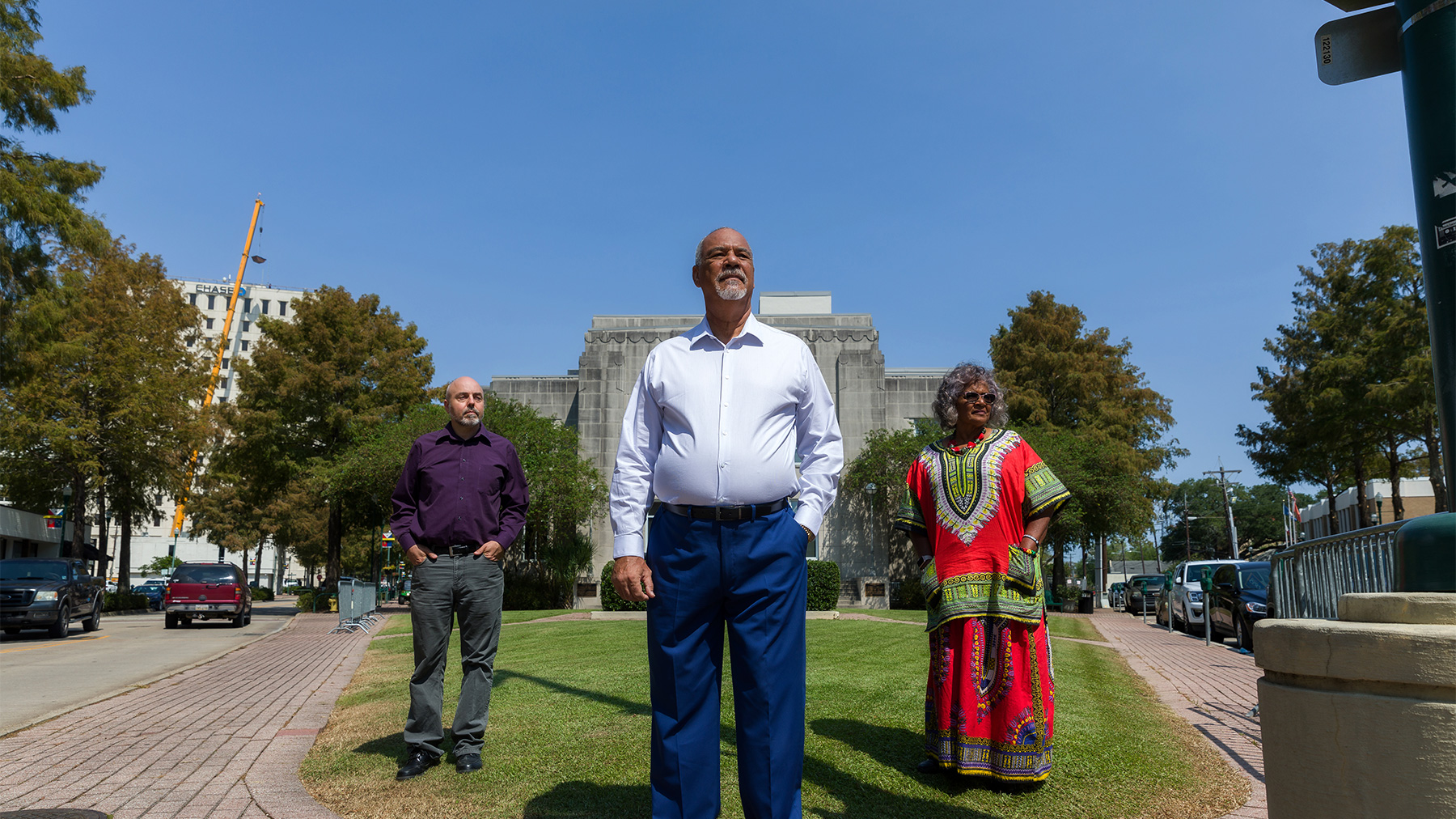A statue of Confederate Brig. Gen. J.J. Alfred A. Mouton has finally been taken down in Lafayette, Louisiana, after more than five years of advocacy by community activists.
The memorial to Mouton had loomed over the grounds of what used to be city hall for nearly a century in this Deep South parish, where, in the days before the Civil War, the number of enslaved people who were forced to work on nearby sugarcane plantations nearly equaled the population of free people.
Now, in a moment of national reckoning over the country’s history of racial oppression and the meaning of Confederate memorials, Mouton’s symbolic reign has finally come to an end.
The memorial to Mouton, a son of the city’s founding family, was taken down on Saturday, July 19, just a day after the city reached a settlement with the United Daughters of the Confederacy, which had donated it to the city.
For Fred Prejean, president of Move the Mindset (MTM) – an organization that has been campaigning for the removal – the growing movement to purge Confederate iconography from public spaces has never been more important.
“I would encourage all individuals, groups or organizations to certainly pursue the movement to remove these statues and monuments, because the history of the erection of these symbols has not been explained or taught in schools,” Prejean said. “The history of these symbols has been silenced and replaced with false narrative by the United Daughters of the Confederacy, and it is time to provide our citizens with accurate history of our nation.”
‘Fed up’
Mouton, whose father became a Louisiana governor, was born into a wealthy, plantation-owning family that settled in the region when it was still a territory of France.
Since the United Daughters of the Confederacy (UDC) donated the statue to Lafayette in 1922, the general has stood austerely on his pedestal, his arms folded stiffly across his chest, his hardened expression etched in stone and locked on the city, as if still at war.
For many residents, but especially for the Black community, the statue served as a constant reminder of white supremacy and the terror and violence Mouton inflicted upon enslaved people.
Last summer, after a nine-hour meeting, the city council voted unanimously to take down the statue. But the UDC filed a motion in court seeking to uphold a 1980 permanent injunction that locked Mouton in place. The path to the statue’s removal was finally cleared on July 16 when the UDC agreed to a settlement under which the city would pay for the removal and transportation to a new site secured by the UDC and for the design and construction of a new statue base.
Prejean and MTM activists used education to help the community understand the history of who Mouton really was – a slaver and vigilante leader.
To win over local residents, MTM mounted a multifaceted campaign that included panel discussions, documentary film screenings, appeals to the city council, presentations at the public library and peaceful demonstrations at the statue itself.
The organization’s perseverance paid off when the settlement was reached. The judge – who Prejean said was “fed up” – had only to add his signature, which he did last Friday.
‘We never gave up’
Prejean was relieved to hear that the statue would come down, but he didn’t know how quickly progress would be made. He received a phone call Friday night at 7 p.m. and was advised the statue would be removed promptly, at 11 a.m. the next day. Community members applauded as the statue came down.
“The behavior of the city’s residents surprised me most,” Prejean said. “A lot of residents didn’t want it moved. But it had literally been months since these residents made the claim to leave the statue where it was. They had been silent for months and months. We have done a very good education job, one that can’t be denied.”
Indeed, the city council voted unanimously to remove the statue.
“I’m very happy,” Prejean said. “It took us five-and-half years to educate the public, and it’s just amazing that the education process finally took hold with the city council acknowledging the history and circumstances under which that statue was placed.”
Since its removal, many residents of Lafayette have complimented Prejean and MTM for the peaceful manner in which they pursued their goal.
“It’s a good feeling,” Prejean said. “We never gave up, and people are expressing their gratitude. It was a very positive, happy day.”
Photo by Collin Richie



